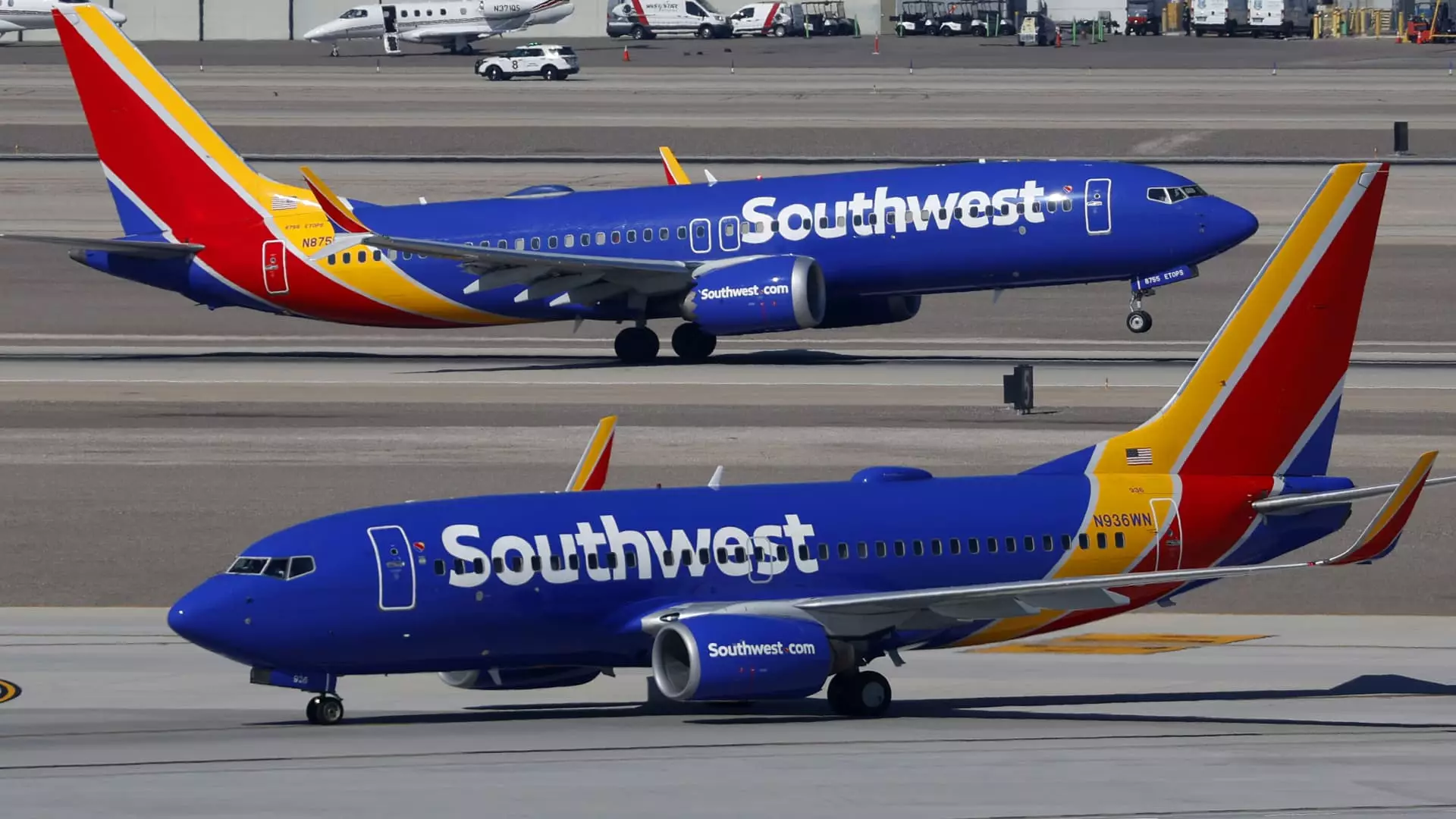In recent statements, Southwest Airlines has revealed alarming shifts in its operational strategies, signaling possible turbulence on the horizon. The airline is set to reduce its capacity in the latter half of the year, amidst emerging indicators of weakening domestic bookings. In their securities filing, Southwest acknowledged the difficulty in forecasting due to ‘current macroeconomic uncertainty,’ which is decidedly unsettling for those invested in their future performance. Unlike the upbeat rhetoric often found in the airline industry, this admission highlights a growing vulnerability that should not be glossed over.
Quantifying the Losses
The figures surrounding Southwest’s performance paint a grim picture. The airline anticipates unit revenue to be flat or could even drop by as much as 4% in the second quarter compared to last year. They also refrained from reaffirming their earnings guidance for 2025 and 2026. This lack of confidence in long-term predictions is particularly troubling, especially when juxtaposed with the somewhat positive outcomes of the previous quarter, where Southwest reported a smaller net loss of $149 million. While it’s an improvement from a year ago, such losses should cause stakeholders to rethink their optimism.
Industry-wide Reassessments
It’s not just Southwest experiencing a shift in fortunes; both United Airlines and Delta Air Lines have also implemented capacity cuts. The aviation sector is notorious for its volatility and precarious balance sheets, but these concurrent reductions highlight an alarming trend. Delta has retracted its full-year forecast, while United boldly labeled the U.S. economy as “impossible” to predict. Such declarations echo the sentiment that airlines are bracing for potential financial squalls ahead — a scenario that may leave Southwest in a precarious position, especially as it confronts heightened competition from its more premium-focused rivals.
Strategic Overhaul: A Double-Edged Sword
Southwest’s aggressive shift in business strategy has undeniably drawn attention. Ditching its long-standing open-seating model for assigned seats may be a necessary evolution, yet it also risks alienating its core customers who value simplicity and low costs. The introduction of basic economy tickets alongside plans to start charging for checked luggage—ending a decades-old complimentary policy—highlights a frantic attempt to monetize services in the face of declining revenues. This rapid reorganization begs the question: will these moves satisfy investors or merely serve as a stopgap to soothe activist hedge funds like Elliott Investment Management, who have pressured the airline for better revenue performance?
A Leadership Conundrum
CEO Bob Jordan’s confident assertions regarding positive results from newly rolled-out initiatives feel increasingly hollow against the backdrop of ongoing financial losses. With Southwest executives poised to face analysts soon, the pressure mounts for transparent discussions about how the airline plans to navigate these tumultuous waters. The concern is that while there may be promising results in the short-term initiatives, they do not address the core issues that Southwest faces in the long run.
While Southwest Airlines continues to grasp at fleeting successes, the broader economic landscape coupled with its strategic missteps provides a sobering backdrop that could ultimately dictate the airline’s fate in a checkered future.

